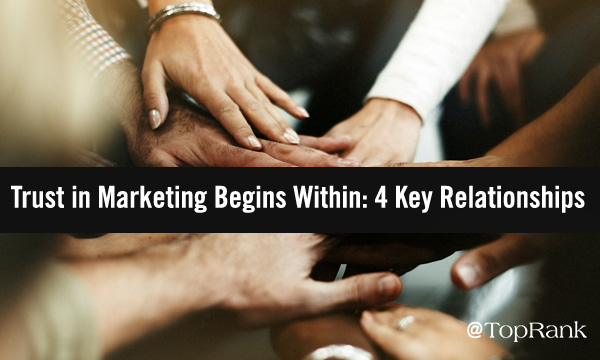Blogging has become a must-do for any business looking to succeed in content marketing.
It is a consistent and powerful way to reach the masses with your expertise. There is no better way to show that you are an authority in your field than with a regularly-updated blog. A successful blog will drive people to your website and improve your business’ SEO rankings.
While anyone can blog, not everyone succeeds and manages to write blog content that performs on the web.
Is a blog right for your business? How does a business create a successful blog?
Read on to find out.
Should Your Business Blog?
Your business should absolutely be blogging. Blogging is a great idea for all businesses, regardless of size or industry.
Why is that?
Blogging is an essential part of the content & digital marketing process. It’s a crucial part of SEO (search engine optimization), as you’re going to need a lot of high-quality backlinks to be able to rank in your industry.
Blogging is a one-stop-shop for showcasing expertise in your field and establishing a good SEO ranking. Not only that, it is a content platform that people understand and are familiar with.
Don’t take my word for it. The benefits of blogging are backed by hard numbers:
(Image Source)
One of the main reasons you should start a blog for your business is because there’s a good chance that your competitors have already done it, and you don’t want to get left behind.
In fact, 79% of B2B marketers use blogs. The effectiveness of blogging is not a secret. That’s why so many businesses are flocking to the platform.
One of the main reasons that businesses blog is because of the impact blogs have made. Blogs are now read by 77% of internet users. That’s an overwhelming number. With numbers like that, it’s not hard to see why 51% of business owners cite blogging as being absolutely critical to a cohesive buyer journey.
Check out some of the companies that you do business with. Everyone from your doctor to your contractor and your lawyer is likely writing some kind of industry-specific blog. Blogging is considered to be useful, important, or critical by 81% of companies.
When you look closely at the numbers, you’ll see the incredible impact that blogging can have on a business:
What Makes a Blog Successful?
Not all blogs are created equal. There are blogs that garner thousands of views, that elevate a business on an SEO level, and attract legions of readers. Then there are the blogs that go almost completely unread.
Usually, these less popular blogs approach content marketing without a plan. It’s not enough to just write down your thoughts and expect people to flock to read your every word. That’s not how blogging works.
So you need a plan. After all, you’re not alone in this blogging endeavor…
(Image Source)
What makes a successful blog? Here are the top 11 reasons.
#1. Successful blogs are informative.
Bloggers have to add to the reader’s knowledge and understanding of a subject. If you’re just stating the obvious or going off on unrelated tangents, you’re going to quickly lose reader interest. And once you lose a reader’s interest, they’re not going to come back. The only way for your blog to gain momentum is with repeat readership.
Readers who find your writing informative will share your content and come back for more. In essence, your readers are part of your blog’s marketing department. But they have to be getting something out of the deal as well. That’s where informative content comes into play.
#2. Successful blogs focus on quality rather than quantity.
Ignore the word count and focus on the heart of the matter. A reader would rather absorb 2,000 words of quality content instead of suffering through 4,000 words of fluff.
That being said, you also don’t want your blog to be mistaken for a blurb. It should be a simple matter to get 2,000 quality words on any given subject in your field. You don’t want to force length, but you also don’t want to be overly brief.
Get to the heart of the matter and present good information. In food terms, skip the veggies and get into the meat!
#3. Successful blogs have a clearly-defined objective.
You shouldn’t just start a blog for your business and make it up as you go along. Like most ventures worth taking, it is best to do some research so that you can enter into the blogging process with defined goals.
For starters, what are you looking to accomplish through your blog? There are many different reasons why a business might decide to start one. It’s important to embark on this project with your specific goal in mind.
(Image Source)
- Are you looking to improve your SEO ranking?
Blogging is a great way to do it. Not only does it provide you with additional space to drop in relevant high-value keywords, but guest blogging can help your business generate links on other sites that connect back to you. Guest blogging is the process of posting an informative blog on someone else’s website. It is one of the best ways to increase your backlog portfolio and get Google to notice you.
Blogging also helps with internal linking. That’s another important SEO step. You’ll want to include a few different links throughout your blog to other articles or pages on your website.
- Are you looking to increase your social media presence?
That’s another great goal for a blog. Blogs are incredibly shareable, especially if they’re providing good content for your audience. If you’re making valid points, users will share your content with their friends and colleagues on popular social media sites like Facebook and Twitter.
Why do you want that?
More eyes lead to more exposure. More exposure leads to more clicks. More clicks mean more organic traffic and inevitably more sales.
- Are you looking to bring in new revenue?
That’s something else a blog can do. Create articles that are based around your services, hyping your ability to fulfill the need that the blog has been focusing on. Don’t hype yourself nonstop throughout the article. A simple mention of your capabilities at the beginning and the end are enough. Let your knowledge and expertise do the selling for you throughout the article.
#4. Successful blogs develop a content calendar.
They don’t wing it. You should never be sitting around wondering what kind of blog you’re going to put together this week. You need to have a content calendar completed at least a month in advance.
You should be strategically laying out your content week by week. You can even create little teasers at the end of your articles that hype next week’s topic. You could do themed months where you dive in deep on a specific topic. But you’re only able to do that if you have a handle on where you’re going.
#5. Successful blogs publish regularly.
It’s also important to remember that consistency is key for a successful blog. You want to create a regular schedule and then stick to it if you want your audience to keep coming back for more.
(Image Source)
Let’s say you’re going to be posting three times per week. Your audience comes to know that every Monday, Wednesday and Friday they can expect a new article on your site. People like knowing when content is coming. Your blog can then become a regular part of their week.
(Image Source)
#6. Successful blogs have a clearly-defined “voice.”
You’re going to want to decide your blog’s voice early on and then stick to it. A lot of that has to do with what audience you’re catering to. You don’t want to dumb things down if you’re dealing with an audience of experts. Conversely, you don’t want to confuse an audience of beginners with a ton of techno-babble and jargon. You need to find a well-defined and natural tone that fits in with the wants and needs of your audience.
#7. Successful blogs are focused on value, not self-aggrandizement.
No one wants to see needless self-promotion at every turn. The most successful blogs pass their articles off as a service in and of themselves. If every other paragraph is an advertisement for your paid services, people are going to realize they’re looking at a 2,000-word ad and navigate away from your site.
You can make your blog feel like a service by establishing expertise in your field. Typically, people are coming to a business blog because they’re looking for information. If you can provide quality information without sounding like an infomercial, you’ll earn their trust and establish a sense of brand loyalty early on.
Let’s say you’re a dentist. You’ve written a blog entitled “What to do When You Break a Crown.” That’s something people will typically be Googling during a trying time. (Namely, after they’ve already broken a crown) By providing this reader with understandable expertise, you’ve established yourself as an authority in the dental field. Chances are, when it comes time to get that crown replaced, the person is going to come to you.
Experience and knowledge are the true sales tools of your blog. Establishing and reinforcing trust in your readers will bring in more business than touting your greatness.
#8. Successful blogs are focused.
You’re going to want to find a main focus for your blog. The best blogs are focused on a few key areas, rather than acting as a catch-all for the entire industry.
It’s important that your content remains focused and not fly all over the place. Make sure you’re sticking to your area of expertise. The dentist in our earlier example should stick to oral hygiene and emergency dental situations as the basis for their blog. If they start posting blogs about auto repair, people are just going to be confused.
Outline your niche and stick to it.
#9. Successful blogs focus on promotion as much as creation.
Remember, there’s no point in creating a blog post if no one can find it.
People aren’t going to magically discover your blog because you’ve published. That’s where social media comes in. Promote your posts on social media for maximum exposure. You might want to try boosting those posts with paid advertising for the first few articles. This will bump up your readership, and hopefully people will keep coming back for more week in and week out.
You should also be promoting your blog on the main page of your website. If you have a newsletter (you should!) include preview snippets in there with a link that readers can follow straight to the full article.
#10. Successful blogs are letter-perfect.
Part of creating quality content is ensuring that your articles are not a grammatical nightmare.
So edit them.
In fact, you should be editing your content up to three times before posting it. You don’t want typos in your work. Your blog posts are meant to show off your knowledge and expertise. Nothing undermines expertise more than glaring typos and spelling mistakes. Invest in a grammar checking service like Grammarly, which will check your blog articles for any mistakes or unintentional plagiarism.
#11. Successful blogs only share new information.
Another thing that successful blogs do is keep content updated with new information. Especially in the digital sector, everything is constantly changing. When that happens, the information that you have on your site becomes outdated. The last thing you want is for people to stumble onto outdated data, as it makes you seem unreliable.
It’s a good idea to consistently go back and update well-performing blogs with new information. It keeps the article up to date and is a great way to repurpose old content and push it out via social media again.
In Conclusion
Blogging can be one of the most effective tools at a business’s disposal. Creating and marketing consistent content creates an SEO dream scenario of guest posting, keyword inclusion, optimized images, and more.
Blogging can also help you improve your reputation in your community. It shows off your unrivaled expertise and impresses your prospects. Blogging is a surefire way to build trust.
The benefits of blogging far outweigh any negatives. Develop a blogging plan with your team and create a dedicated blog platform for your business today.
The post Blogging Best Practices: Writing Content That Will Perform appeared first on HigherVisibility.
The post
https://www.highervisibility.com/blog/blogging-best-practices-writing-content-that-will-perform/ appeared first on
https://www.highervisibility.com
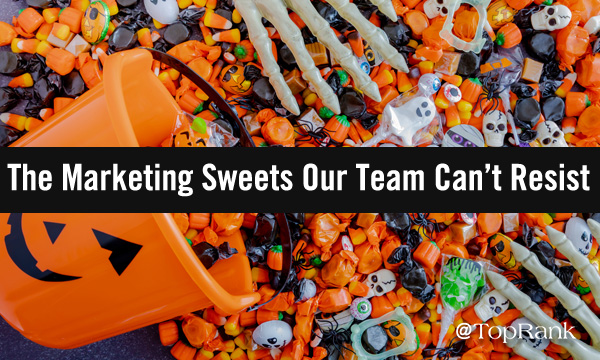
 Admit it. On Halloween night, the fierce competitor within you sprinted from home to home to claim as much sugary bounty as your pillowcase could carry. But the loyalist and purist in you was on the hunt for a specific candy treat. A treat that put all the rest to shame; a treat that always hit the sweet spot. via GIPHY For me, that coveted treat was: the Almond Joy. Sweetened coconut. Crunchy almonds. Smooth milk chocolate. Devilishly delicious, but ghoulishly elusive amongst a sea of KitKat- and Snickers-purchasing households. (Here’s to you, organic reach on Facebook.) As marketers, we all have our favorites. From tactical techniques that sweeten our marketing mix to the integration of marketing elements to tantalize our audience’s taste buds, the TopRank Marketing team weighs in on both fun- and king-size marketing treats they can’t resist.
Admit it. On Halloween night, the fierce competitor within you sprinted from home to home to claim as much sugary bounty as your pillowcase could carry. But the loyalist and purist in you was on the hunt for a specific candy treat. A treat that put all the rest to shame; a treat that always hit the sweet spot. via GIPHY For me, that coveted treat was: the Almond Joy. Sweetened coconut. Crunchy almonds. Smooth milk chocolate. Devilishly delicious, but ghoulishly elusive amongst a sea of KitKat- and Snickers-purchasing households. (Here’s to you, organic reach on Facebook.) As marketers, we all have our favorites. From tactical techniques that sweeten our marketing mix to the integration of marketing elements to tantalize our audience’s taste buds, the TopRank Marketing team weighs in on both fun- and king-size marketing treats they can’t resist.
 Josh Nite
Josh Nite Elizabeth Williams
Elizabeth Williams Nick Nelson
Nick Nelson Annie Leuman
Annie Leuman Ashley Zeckman
Ashley Zeckman Tiffani Allen
Tiffani Allen Lane Ellis
Lane Ellis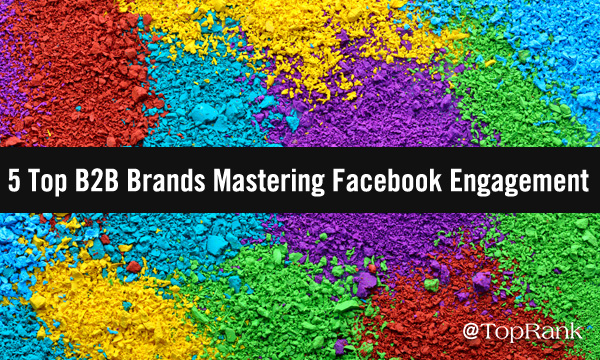

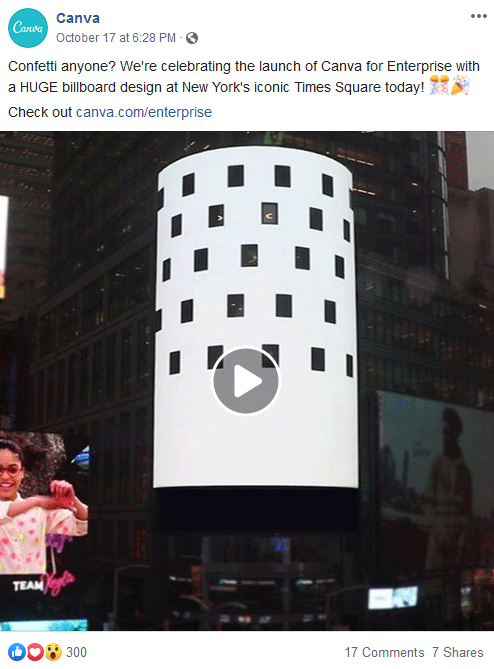 Canva regularly asks relevant questions of its Facebook community and actively responds positively in emoji-rich comments, such as a recent color and hue-related post which inquired
Canva regularly asks relevant questions of its Facebook community and actively responds positively in emoji-rich comments, such as a recent color and hue-related post which inquired 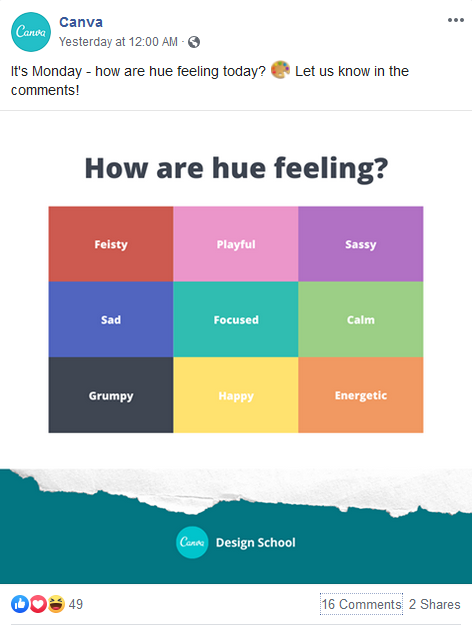 Canva hosts several Facebook groups including a
Canva hosts several Facebook groups including a 
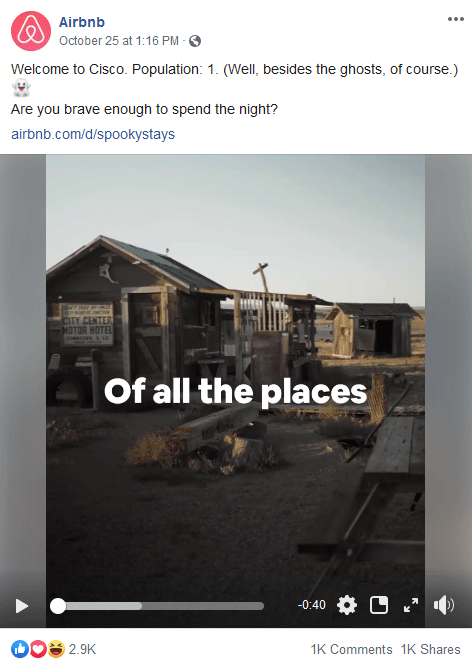
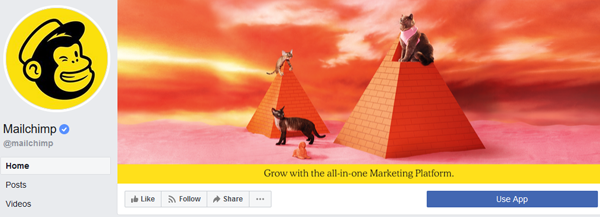


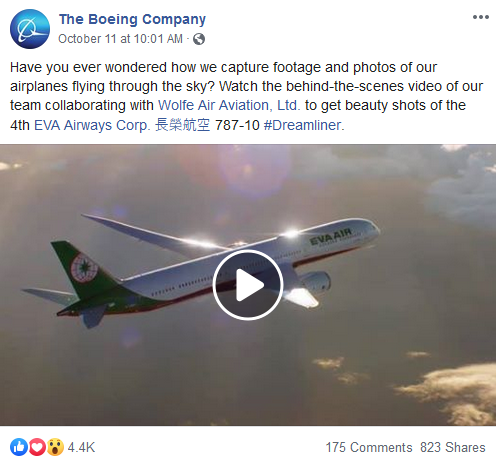 Boeing also regularly encourages its Facebook fans to take part in a variety of corporate social responsibility efforts, such as a recent
Boeing also regularly encourages its Facebook fans to take part in a variety of corporate social responsibility efforts, such as a recent 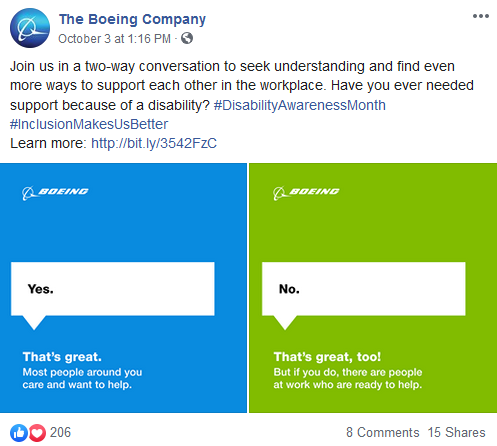

 At TopRank Marketing we are
At TopRank Marketing we are 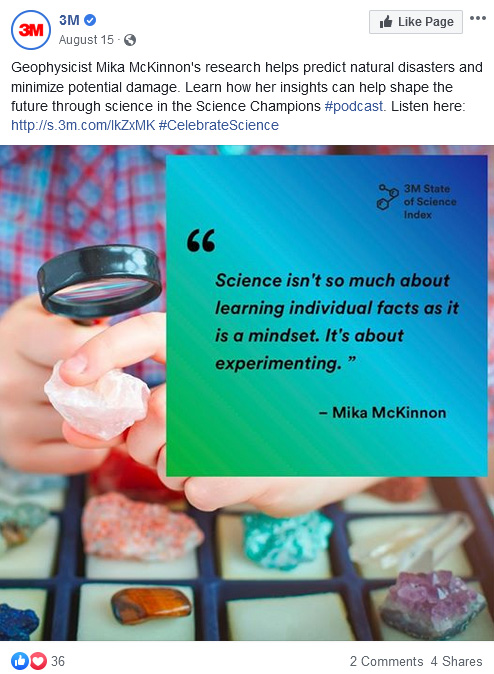 Using podcasting can be a great way to improve customer experience game, and we’ve published several in-depth looks at how B2B marketers can promote podcasts, and have also gathered together an industry-leading list of top marketing-related podcasts, which you can find here:
Using podcasting can be a great way to improve customer experience game, and we’ve published several in-depth looks at how B2B marketers can promote podcasts, and have also gathered together an industry-leading list of top marketing-related podcasts, which you can find here:







 Delighting your audience includes understanding your customers, and understanding how your prospects or customers interact with your brand… Your goal is to be pathologically empathic to your customers. Why? Because: Empathy is the Miracle-Gro of a thriving customer-centric business. –
Delighting your audience includes understanding your customers, and understanding how your prospects or customers interact with your brand… Your goal is to be pathologically empathic to your customers. Why? Because: Empathy is the Miracle-Gro of a thriving customer-centric business. –  True content marketing starts at setting specific, concrete goals on what we believe audiences who engage with our content will do vs. those who don’t. Will they close faster? Will they stay longer? Will they buy more? That’s the benefit of content marketing. And it starts with setting measurable goals not for the content — but for the audience we want to impact. –
True content marketing starts at setting specific, concrete goals on what we believe audiences who engage with our content will do vs. those who don’t. Will they close faster? Will they stay longer? Will they buy more? That’s the benefit of content marketing. And it starts with setting measurable goals not for the content — but for the audience we want to impact. –  Successful partnerships with influencers require an understanding of what the audience wants and how a brand/influencer collaboration can give it to them. Finding ideal influencers for impact means discovering those with on-topic credibility, the ability to publish, and engaged network and a willingness to share. Matching the right types of influencers with the right content for mutual benefit is essential. Brandividuals can drive awareness, subject matter experts can create engagement and customers who advocate can help inspire sales. As a result, customers get great content, brands attract new customers and influencers earn exposure and access to opportunities. –
Successful partnerships with influencers require an understanding of what the audience wants and how a brand/influencer collaboration can give it to them. Finding ideal influencers for impact means discovering those with on-topic credibility, the ability to publish, and engaged network and a willingness to share. Matching the right types of influencers with the right content for mutual benefit is essential. Brandividuals can drive awareness, subject matter experts can create engagement and customers who advocate can help inspire sales. As a result, customers get great content, brands attract new customers and influencers earn exposure and access to opportunities. –  We admonish companies to ‘become publishers’. However, boredom is not a PUBLISHING problem, it’s a RELEVANCE problem, which is an INNOVATION problem. B2B's publish endless content, but studies show underperforming outcomes in aggregate. We must synthesize the throughput and format models of publishing with those of social innovation and entrepreneurship. –
We admonish companies to ‘become publishers’. However, boredom is not a PUBLISHING problem, it’s a RELEVANCE problem, which is an INNOVATION problem. B2B's publish endless content, but studies show underperforming outcomes in aggregate. We must synthesize the throughput and format models of publishing with those of social innovation and entrepreneurship. –  Great content isn’t about platitudes. It’s about provocation. Incitement. Taking a stand and making your audience think in a new way. Giving the counterargument to conventional wisdom. When we do that, we advance the dialogue, rather than diminish it. –
Great content isn’t about platitudes. It’s about provocation. Incitement. Taking a stand and making your audience think in a new way. Giving the counterargument to conventional wisdom. When we do that, we advance the dialogue, rather than diminish it. –  In a dialogue, you cannot truly listen if you’re just impatiently waiting for your turn to speak. In a noisy content world, this behavior is inadvertently applied in how we, as content leaders, engage with our audiences. We pump out content and then wait until it’s our turn to speak again and pump out some more per our content calendars. What use is it if neither side is listening? Content is meant to be a source of dialogue. –
In a dialogue, you cannot truly listen if you’re just impatiently waiting for your turn to speak. In a noisy content world, this behavior is inadvertently applied in how we, as content leaders, engage with our audiences. We pump out content and then wait until it’s our turn to speak again and pump out some more per our content calendars. What use is it if neither side is listening? Content is meant to be a source of dialogue. –  The “Field of Dreams” B2B marketing game is over in 2019. If you build it, launch it or just create it, nobody is coming! It’s not only important to create a content strategy, tell great stories and solve customer problems, but you must customize and personalize this content and bring it to your audience where they are currently engaging. –
The “Field of Dreams” B2B marketing game is over in 2019. If you build it, launch it or just create it, nobody is coming! It’s not only important to create a content strategy, tell great stories and solve customer problems, but you must customize and personalize this content and bring it to your audience where they are currently engaging. –  Don’t cut corners when it comes to creating a promotional plan. The ubiquity of mobile devices, social channels, and online content means that your ability to draw someone’s attention is mostly visual now. Images, graphics, videos, color choice, and layout are all key to grabbing someone’s attention in those two seconds as they scroll through a feed… Your images need to convey meaning and value without using words. Boring, generic stock photos won’t cut it. Contrary to popular belief, people do still read traditional content forms like whitepapers, eBooks and case studies, but first you’ll need to pull them in with attention-grabbing visuals that show them what they’ll get before you tell them what they’ll get. –
Don’t cut corners when it comes to creating a promotional plan. The ubiquity of mobile devices, social channels, and online content means that your ability to draw someone’s attention is mostly visual now. Images, graphics, videos, color choice, and layout are all key to grabbing someone’s attention in those two seconds as they scroll through a feed… Your images need to convey meaning and value without using words. Boring, generic stock photos won’t cut it. Contrary to popular belief, people do still read traditional content forms like whitepapers, eBooks and case studies, but first you’ll need to pull them in with attention-grabbing visuals that show them what they’ll get before you tell them what they’ll get. – 
